-
Posts
520 -
Joined
-
Last visited
Content Type
Profiles
Forums
Blogs
Gallery
Events
Store
Posts posted by censlenov
-
-
It is an unusual combination that i believe is the result of military service followed by civillian labour service. I actually offered $150 canadian and he accepted so i'm still getting a good deal. There are 2 researchers that can work off just s/n's GK is one and he is so swamped his results have about a 2-3 month turn around but there is another researcher a bit more expensive but provides a very nice product with a 2 -3 week turn around.
Thatnks for your input
Cheers
Chris
0 -
I've been offered a group and told to make the person selling it an offer. The medals are all mounted on a single mount and all show similar wear to the ribbons. I must also add that i trust this dealer and don't believe it to be a made up group.
That said the group:
Order of Glory 3rd cl 25*,***
Valour Medal1,41*,***
Achivement in labour medal no SN
Labour distinction medal no SN
I want to make a fair offer on it and will definately get the group researched when i receive it. This would be my first soviet "Group"
Cheers
Chris
0 -
I've actually managed to have someone take a pick of the stone next weekend so everything has worked out well. I heard Blessington has some good fishing do you know if thats true?
0 -
Whats the second class of this order going for right now Lorenzo? Sounds like you got yourself a good investment back in 05
Cheers
Chris
0 -
On the topic of numbers issued is there a known number of recipients who recieved bars to there bravery medals? Multiple bars? Do bravery awards with bars (primarily the small silver and bronze) come up for sale often? Can anyone show examples with second/third award bars?
Cheers
Chris
0 -
I have just ordered the medal group belonging to the following man
Name:GARLAND, EDWARDInitials:ENationality:CanadianRank:Company Sergeant MajorRegiment/Service:2nd Canadian Mounted Rifles BattalionDate of Death:02/02/1919Service No:108238Additional information:Son of George and Margaret Garland, of Main St., Blessington.Casualty Type:Commonwealth War DeadGrave/Memorial Reference:In North-East part.Cemetery:BLESSINGTON (ST. MARY) CHURCH OF IRELAND CHURCHYARD
If anyone could help me get a photo of his grave stone and of the churchyard i'd greatly appreciate it.
Cheers
Chris
0 -
-
Yeah Doc
thats what i was afriad of...... Wouldn't it be great though if there was a double bravery winner in there.... or even a Glory, bravery, red star ohhh.... that would be really nice. I know that in soviet medals by adding the awards card to the medal you ensure a greater return when the time comes to sell the medal so it's the right thing to do. And its not like i'm paying even close to market rate for the medals any way.
Any idea about the amur Railways and award doc???
Chris
0 -
A little over a month ago i had bought a lot of nice soviet medals from a dealer who's prices are very collector friendly. After speaking more with him it sounds like he bought his entire russian stock about 15 years ago en mass. And when enquiring about groups he said he couldn't really prove that any of the singles he had purchased belonged together other than stuff mounted together and thus sells everything as singles even though there are most likely split groups in the mix.
Here's the problem short of getting awards cards for all the items is there an easier way of proving items belong together?????
The dealer in question has about 15 OG3, 15ORS, 15VM, and 15MMM all numbered that he will sell me for about $1400cdn. At todays prices they are a steal and i'm not going to hesitate at buying them as soon as i have the funds raised. It's the friggin cost of getting the awards cards that really sucks.....
Oh and secondly whats the going rate for a Baku Amur Railway medal with award document???
Cheers
Chris
0 -
I'm afraid this group look to be a case of someone finding documents and rebuilding the group to represent the proper entitlement. The ribbons do not share a similar wear patten throughout and the thing that really bothers me is that the Golden kite is missing alot of enamel yet its sandwiched in between a Sacred treasure and rising sun that appear to be in much nicer condition. Now i've seen a great deal of ww2 japanese bars and also afew post war bars and the war time bars usually had a flat strip not round pin for pinning them to the uniform. The post war however did more commonly have a mounting similar to yours (is that mounting bar also plated??). Sorry to bring bad news but i wouldn't buy it as period off these pics alone.
Chris
0 -
Oh how i wish i had joind this forum earlier. I actually managed to buy that group for $70cdn about 3 years ago and only sold it on to finance an MM group to a local man other wise i'd have loved to keep it as you said it's a very nice group. I'll keep my eyes peeled i may come across another. I'm glad you enjoyed it.
Cheers
Chris
0 -
I promised Ulsterman i'd post this group i had in my collection but past along about a year ago.
The group is mounted as from left to right
Ethiopian Patriots medal
instituted by Emperor Haile Selassie I on 30th November 1944 as a reward for meritorious patriots who carried on open hostilities against the enemy during the Campaign 1936-1941. Awarded in a single class (bronze), palms (actually torches) being awarded for each year of service and worn on the medal ribbon. Palms, each with a small scroll in Amharic script denoting the year of "service" are affixed to the ribbon. Its reverse is identical to the Refugees medal, its obverse is different as is its crown suspension. Translated, the obverse legend reads "Gold is tested by Fire" and the reverse one stands for "Hope strengthened by Faith is a Weapon for Victory 1941".
Ethiopian refugees medal
instituted by Emperor Haile Selassie I on 30th November 1944 as a reward for those who went into exile and participated in the liberation struggle, especially in helping exiles and displaced persons during the Italian occupation 1935-1941. Awarded in a single class (bronze), palms (actually torches) being awarded for each year of service and worn on the medal ribbon.
39-45 star
The Star was awarded for six months service on active operations for Army and Navy, and two months for active air-crew between 02 September 1939 and 08 May 1945 (Europe) or 02 September 1945 (Pacific). The ribbon consists of three equal stripes: dark blue, red, and light blue (representing the navy, army and air force).
Africa Star
The star was awarded for a minimum one day service in an operational area of North Africa between 10 June 1940 and 12 May 1943. The pale buff (sand) ribbon has a central red stripe and two narrow stripes, dark blue at left and light blue at right. The colours represent the desert, army, navy, and air force.
Although this group is not attributable (as I imagine many groups of this type are not) it none the less proved interesting in trying to figure out why this combination of British and Ethiopian medals would exist. The following is what I have discovered.
The wresting of Ethiopia from the occupying Italian forces (since 1935) involved British personnel, composed largely of South African and African colonial troops penetrating from the south, west, and north, supported by Ethiopian guerrillas. It was the task of an Anglo-Ethiopian mission, eventually commanded by Major General Orde Wingate, to coordinate the activities of the Ethiopian forces in support of the campaign.
Wingate formulated a plan for action in Ethiopia which he presented to Wavell and senior staff in Cairo in early December 1940. The plan included the formation of a small regular force under Wingate to act as a spearhead for military operations in Gojjam. He argued that:
?To raise a revolt you must send in a Corps d'Elite to do exploits and not just as peddlers of war material and cash ... A thousand resolute and well-armed men can paralyse 10,000?
His plan was approved by Wavell (in the face of Platt's lack of enthusiasm) and Wingate created his formation from one battalion of Sudanese of the British-led Sudan Defence Force and one battalion of Ethiopian soldiers of the 2nd Ethiopian Battalion, mostly composed of soldiers that had served in the Ethiopian army. In total, they numbered only 2,000 men and 18,000 camels meant for transport. The camels were under the care of Laurens van der Post who would go on to become a famous author. Wingate named these soldiers as the Gideon Force, after the biblical figure of Gideon.
Troops of the Gideon Force departed on December 1940 in small columns towards Mount Belaya in Gojjam (the contemporary Metekel Zone of the Benishangul-Gumuz Region).
By mid-January 1941 the British had reinforced their troops in the Sudan under Platt to two expanded divisions. They had also built up their forces in Kenya to three divisions under Lieutenant-General Alan Cunningham. On January 18 and January 19, 1941, the British launched offensives against the Italians: Cunningham's force from Kenya into Italian Somaliland and southern Ethiopia and to the north Platt's divisions from the Sudan into Eritrea. On January 20, the Emperor, accompanied by Wingate, met Ethiopian soldiers on the border crossing from Sudan into Ethiopia at Um Idla.
Wingate's horse-mounted Sudanese troops reached Mount Belaya in five days, while the Ethiopians with their camel caravan took 2 weeks. Wingate and the emperor arrived at Belaya on February 6 and Haile Selassie established his headquarters there.
Platt's poor opinion of Hailie Selassie, Sandford and Wingate, meant that he paid little attention to Mission 101 and the resulting lack of clear areas of responsibility and chains of command (together with Wingate's naturally abrasive manner) meant that for the whole campaign there was friction and animosity between Wingate and the other commanders. On Wingate's arrival at Belaya there followed a period of considerable tension between Wingate and Sandford because the latter assumed he was in overall command. On 12 February they were both summoned to Khartoum where Platt attempted to resolve the issue by confirming Wingate's appointment to command Gideon Force and making him an acting Colonel. Sandford was very upset but was then summoned to Cairo, congratulated on his work and appointed Brigadier, leaving the overall issue unresolved.
On February 18 Gideon Force started crossing over the escarpment into the eastern part of Gojjam. Aided by Arbegnoch fighters, they attacked the Italian forts, garrisons and patrols. Also due to the advance of Cunningham's forces in Somalia, the Italians withdrew eastward from their positions.
On February 24, Wingate led Gideon Force to surround the Italian fort at Bure. Some of the Ethiopian force got lost and a grass fire hindered them, but they met with no Italian resistance. Wingate tried to give an impression of a larger force to intimidate the Italians; he spread the men wide and again, accompanied by the Arbegnoch, began to ambush the Italians. Wingate led some groups himself.
At the same time, Selassie approached the area. Formerly neutral or pro-Italian local rulers turned to support him. Ethiopian irregulars attached to Italian units, known as banda, began to desert to the Emperor's side.
The numerically superior Italians retreated to the southeast on March 4. The British command in Khartoum, which had cracked the Italian codes, informed Wingate of the move. He ordered a Sudanese unit to block and ambush the Italians, but the commander of the unit failed to do so.
Disappointed, Wingate ordered a pursuit and his men made small harassing attacks against the Italians. The Italians pushed through a small Ethiopian force near Dembecha on the Chakara River with 325 casualties (Ethiopian casualties were only 48). The Italian commander of Dembecha also retreated to the east against his orders and Gideon Force occupied Dembecha on March 8.
The next target of the combined British force was a fort near Debre Marqos. This time, the Italians counterattacked and fierce fighting ensued. Gideon Force retreated and began hit-and-run attacks and raids to drain Italian strength. Italian losses amounted to 200 over the next weeks. Their intention to evacuate was blocked by the Arbegnoch.
A couple of days after the Italians had left Debra Marqos, Haile Selassie entered the city April 6. At the same time, British regular forces entered Addis Ababa.
Other Italian forces retreating to the east and over the Blue Nile were continuously harassed by the Arbegnoch and Gideon Force. However, some Arbegnoch began looting in the retaken areas and Gideon Force had to restore order.
When most of Gideon Force were ordered to Addis Ababa (which had been occupied by Cunningham's troops on April 6), a smaller force (Safforce) under Mission 101 pursued retreating Italians to the north towards Debre Sina. While this was going on, on May 5, Emperor Selassie made his formal entry into Addis Ababa with a victory march in which most of Gideon Force were required to provide his escort. After the ceremonies Wingate returned to Safforce.
Shortly after his return, Wingate received an order from Cunningham to stop the pursuit of retreating Italians and help other British forces elsewhere. He pretended that he could not decipher the message and continued on his course. The other part of the Gideon Force, lead by the explorer Wilfred Thesiger, crossed to the north of the Debra Sinai plateau and attacked from the north. On May 18, the Italians found themselves blocked from the north and south. Thinking he faced superior numbers, the Italian commander agreed to surrender on May 24.
The Gideon Force was officially disbanded June 1, 1941. Wingate returned to Egypt. The last Italian troops surrendered in Begemder province in the north to British and Arbegnoch forces.
Its a very interesting group unlike any i've every come across before or since. I hope you enjoyed it.
Cheers
Chris
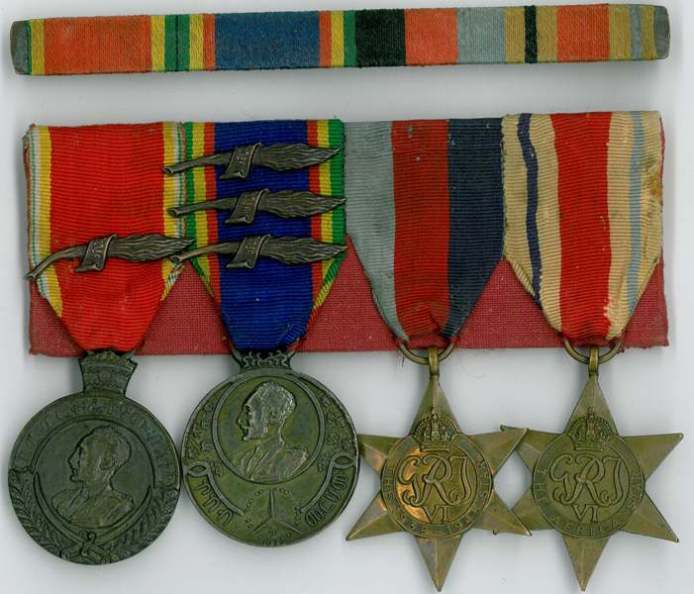 0
0 -
I think Ed's just trying to get us to think positively. If we visualize low prices and concentrate really really hard perhaps the medal fairies will take pitty on us poor non Russians who can't afford the market value of most of these lovelies offered. I can see it now......
0 -
Holy S**T Those last two are awesome. Can you post the reverse pick of the first as i'm wondering if its cast the way i remeber seeing one before.
Cheers
Chris
0 -
I bought a
Mosin Nagant 91/30 for $100 (full wood) 2002
Lee enfield No. 4 MK 2* (full wood) dated 1942 $30 2003
Lee enfield No. 1 Mk 3 (full wood) dated 1918 $150 2003
Lee enfield No. 1 Mk 3* Ishapoor (sporterized with 32x scope) 1945 dated $100 2003
Garand M-1 (full wood) & 1000 rounds on stripper clips $500 2006 (sold in 2007)
just passed up a Siamese marked enfield this weekend (sporterized) for $150 2008
Love the 1918 enfield. All rifles still in very nice condition and safe to fire.
0 -
are these good enough or shoul i try to get better ones?

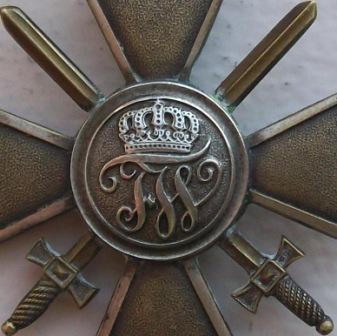 0
0 -
-
-
Here are the better pictures as promised. Still not happy about how the eagle is showing up its much nicer in person. What would be a fair price to ask for this piece as i will be moving it on shortly to finance publishing costs for a new book.
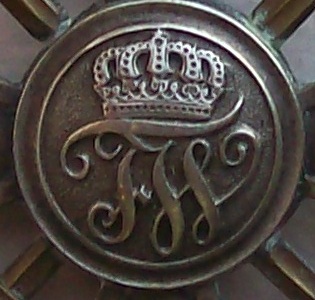 0
0 -
Hello Holger
I'm interested in this cross not because i know much about German militaria but because the crown is very similar to one on my Order of Red Eagle 4th Class seen here: http://gmic.co.uk/index.php?showtopic=31278
The beads on my order are also indented not protruding. Can you give me an idea why this is?
Cheers
Chris
0 -
Hello Owain
I suggest you get in touch with a fellow on the BMF named Eddie Parks. He specializes in medals to Arabs and arab units. I helped him aquire some nice Iraq levie medals and he and i began conversing on the subject of Arabs awarded british medals. He has a list of Arab units which may hold the answer to your inquiry.
I also have a book on the AGS that is very well written that i can look over and see if it holds any answers also.
But my GUESS is (H(onour) G(uard) Arab) Loyal Somali Levies
0 -
I know these pieces but do never believe that they are between 1916 - 1918 were manufactured. Why? Non-ferrous metals (Buntmetall) was an important commodity in the WWI are not silver. I think the cross for a production after 1920 while also addressing the different design of the crown would be explainable. Greeting Mike
Thanks so much for your opinion Mike at least i can say its not an outright forgery.
Cheers
Chris
0 -
It's been suggested on another forum that this may have been an award dating from 1916-18. Which is why the materials used arn't consistent with earlier production issues (solid silver). The person who suggested that idea stated that around 1916 solid silver awards were replaced by a gilt "pot metal". It's a plausible theory and the piece definately has some age to it. When i get a good photo taken the quality of the eagle is absolutely breath taking.
Searching around the forum i found http://gmic.co.uk/index.php?showtopic=29478&hl=red+eagle if you study the swords on the 3rd class in post 2 they are very similar to the one i have.
Searching here (i know these are eagles on 3rd class)
http://medalnet.net/Eagle_Design.htm I'd have to say my eagle looks very similar to 4 th type 1854 - 1918 made by Wagner silver gilt decoration
The more i look at it the more i like it as a period piece and the late war explanation make alot of sense.
Still looking for more feedback before i sell it off.
Cheers
Chris
0 -
I think that cross is made of brass. Is that correct? Greetings Mike
The cross looks to be some kind of metal that has been silver gilt; brass would be the most likely candidate? Have you come across this before?
0




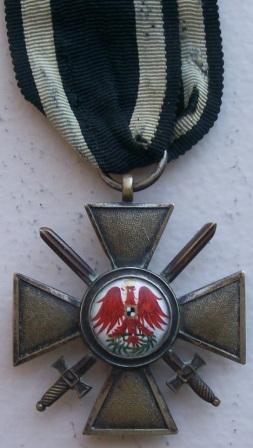
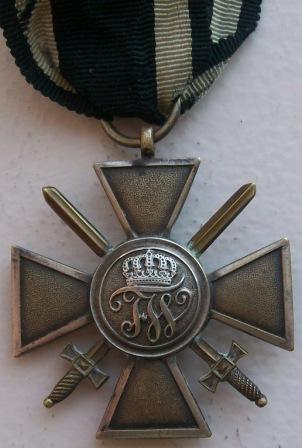
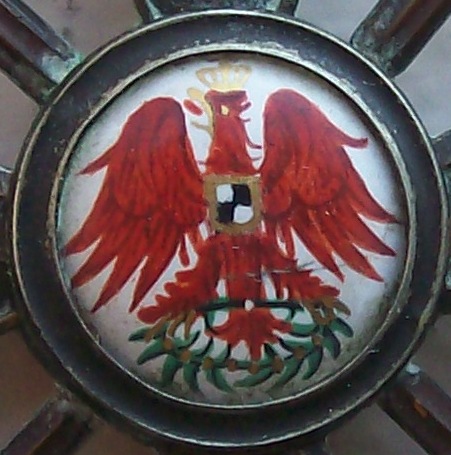
Been offered a group What's a good price
in Russia: Soviet Orders, Medals & Decorations
Posted
The other researcher is actually a forum member so if he wants to be know then i'm sure he'll introduce himself. I'm sure he's monitoring this thread carefully
I don't really want to advertise without his permission as he hasn't really done any advertising for himself and i get the impression he doesn't want to draw alot of attention to himself, but as i said he does have an amazing turn around time and provides hi res colour digital images of each of the document pages. Very nice quality indeed.
Cheers
Chris